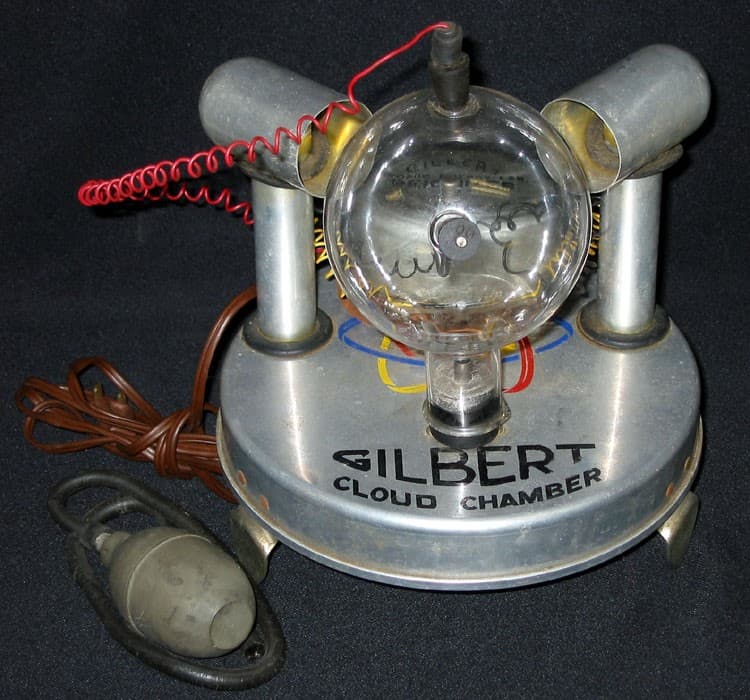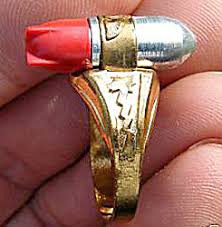It’s a strange world…
In 1950, the Gilbert toy company, A.C. Gilbert, released a kit that allowed children to create and watch nuclear and chemical reactions using actual radioactive material!

The Gilbert U-238 Atomic Energy Lab set originally sold for $49.50 (around $500 today) and contained the following:
- Battery-powered Geiger counter
- Spinthariscope
- Electroscope
- Wilson cloud chamber
- “Nuclear spheres” for making a model of an alpha particle
- Prospecting for Uranium book teaching children about uranium mining
- Learn How Dagwood Split the Atom — a comic book introduction to radioactivity
- 1951 Gilbert Toys catalog
- Gilbert Atomic Energy Manual instruction book
- Four glass jars containing uranium-bearing ore samples (autunite, torbernite, uraninite, and carnotite), serving as low-level radiation sources of:
- Alpha particles (Pb-210 and Po-210)
- Beta particles (Ru-106)
- Gamma rays (possibly Zn-65)
…and batteries were included!
 Inventor, Alfred Carlton Gilbert was passionate about children learning about science through toys, and invented a range of educational toys including the well-known Erector Set.
Inventor, Alfred Carlton Gilbert was passionate about children learning about science through toys, and invented a range of educational toys including the well-known Erector Set.
He was also the inspiration for the true story behind “The Man Who Saved Christmas” when, in 1918, with the United States embroiled in World War I the Council of National Defense wanted to instigate a ban on toy production. Gilbert argued successfully against it and earned the nickname “the man who saved Christmas.”
…and while you might think this kit was an isolated instance of supplying radioactive materials to children, think again…
Enter the Lone Ranger and his Atomic Bomb ring!
 When the “secret message compartment” (aka the red tail of the bomb) was taken off, one could watch bright flashes caused by polonium alpha particles striking a zinc sulfide screen.
When the “secret message compartment” (aka the red tail of the bomb) was taken off, one could watch bright flashes caused by polonium alpha particles striking a zinc sulfide screen.
While plutonium itself is much more dangerous than the uranium 238 found in The Gilbert U-238 Atomic Energy Lab, apparently their radiation is in alpha particles, which only travels very short distances and cannot penetrate human skin.

I always find it fascinating to look at events in the context of their own time – and this was definitely an ‘interesting’ time in our history.
…and a huge thanks to the team at QI XL from whom I learned of this strange and ‘quite interesting’ fact in the first place!
It’s a strange world…
~ Bella